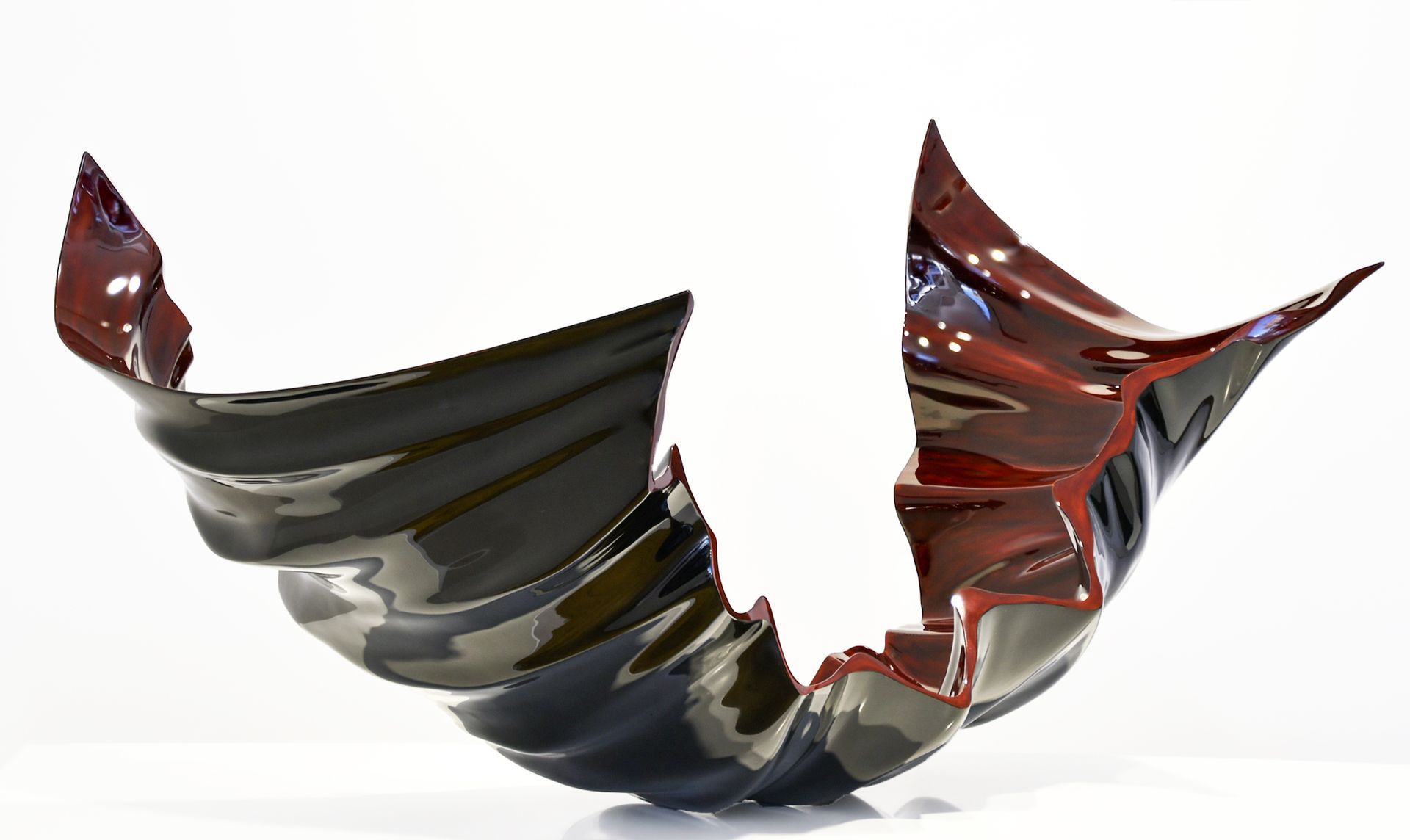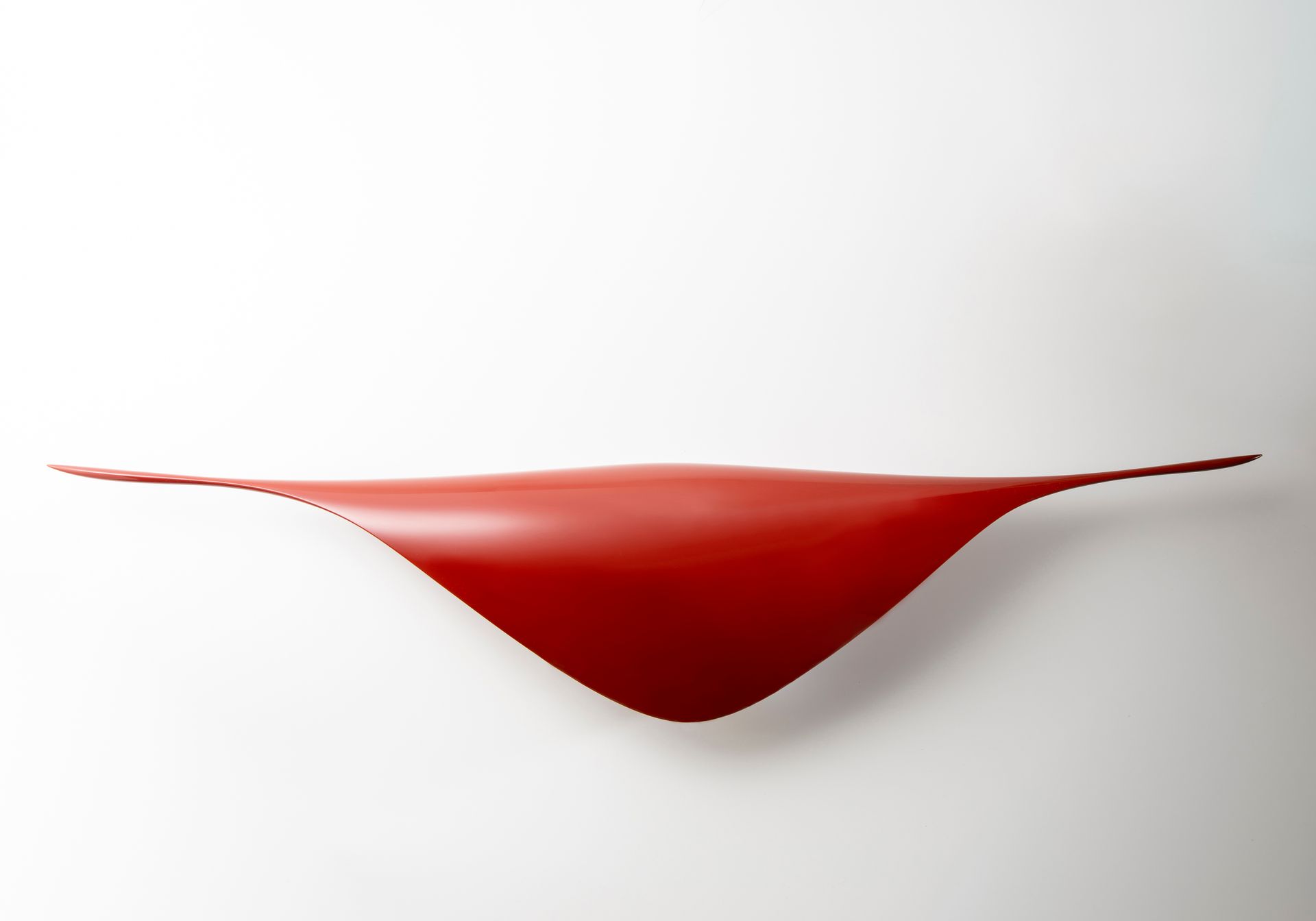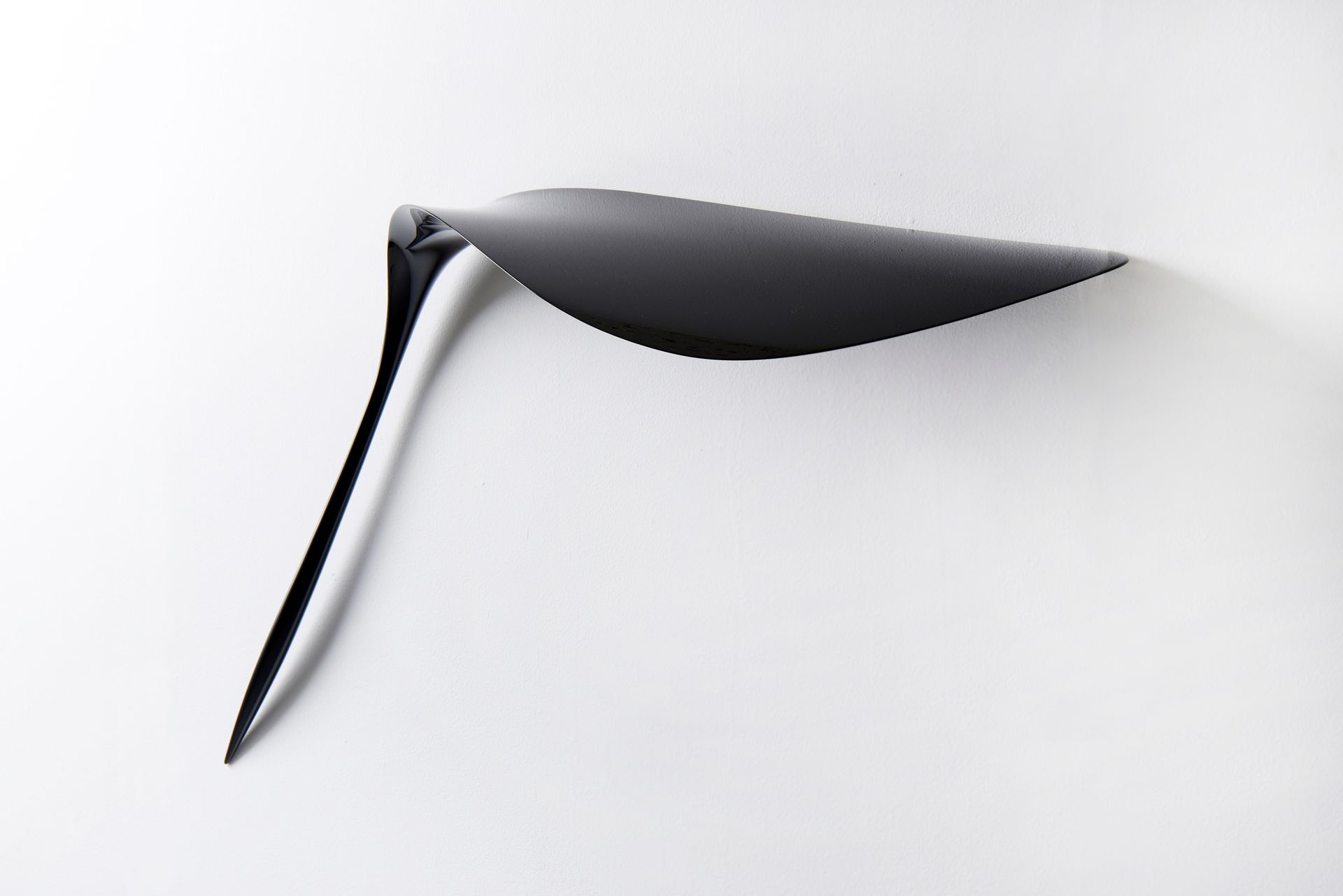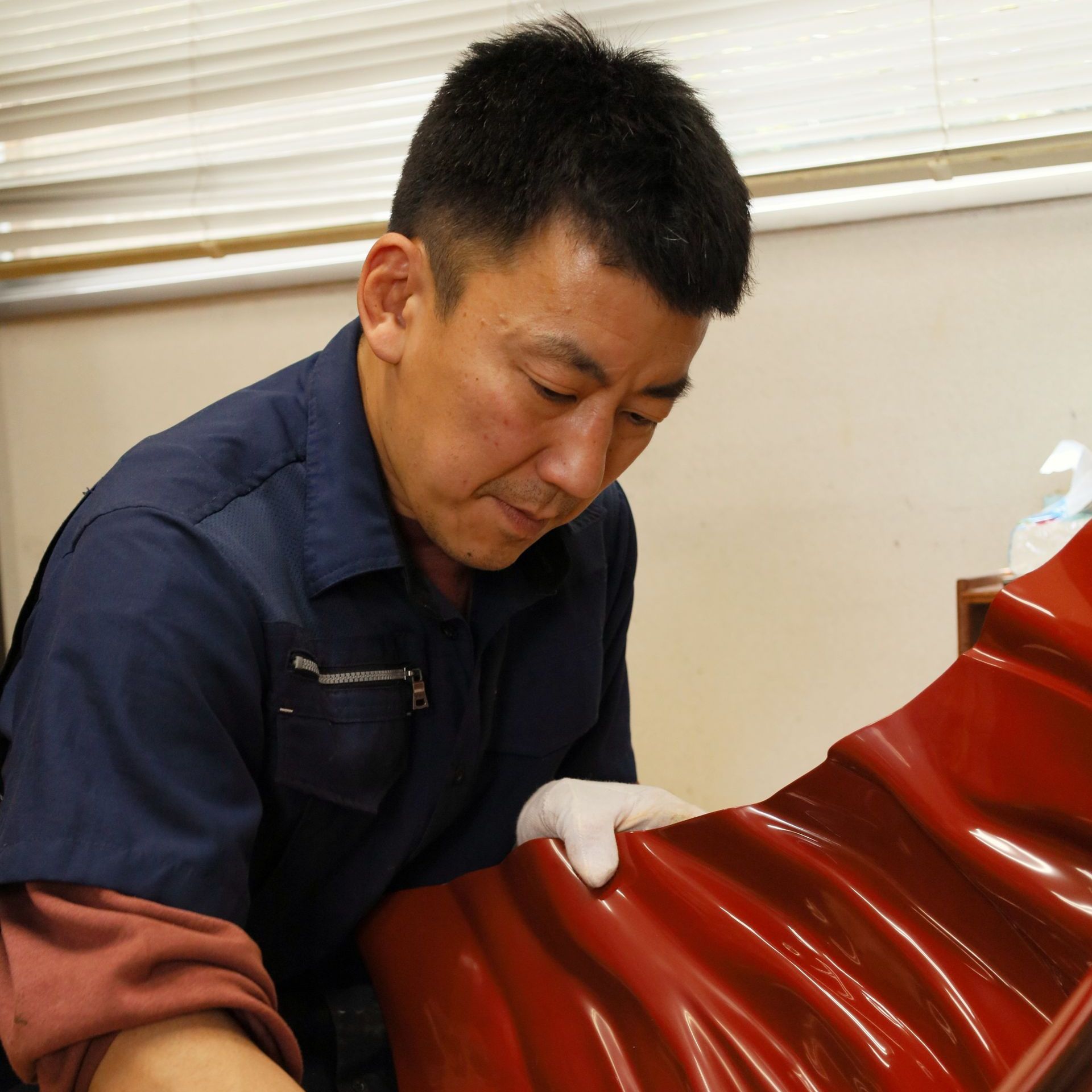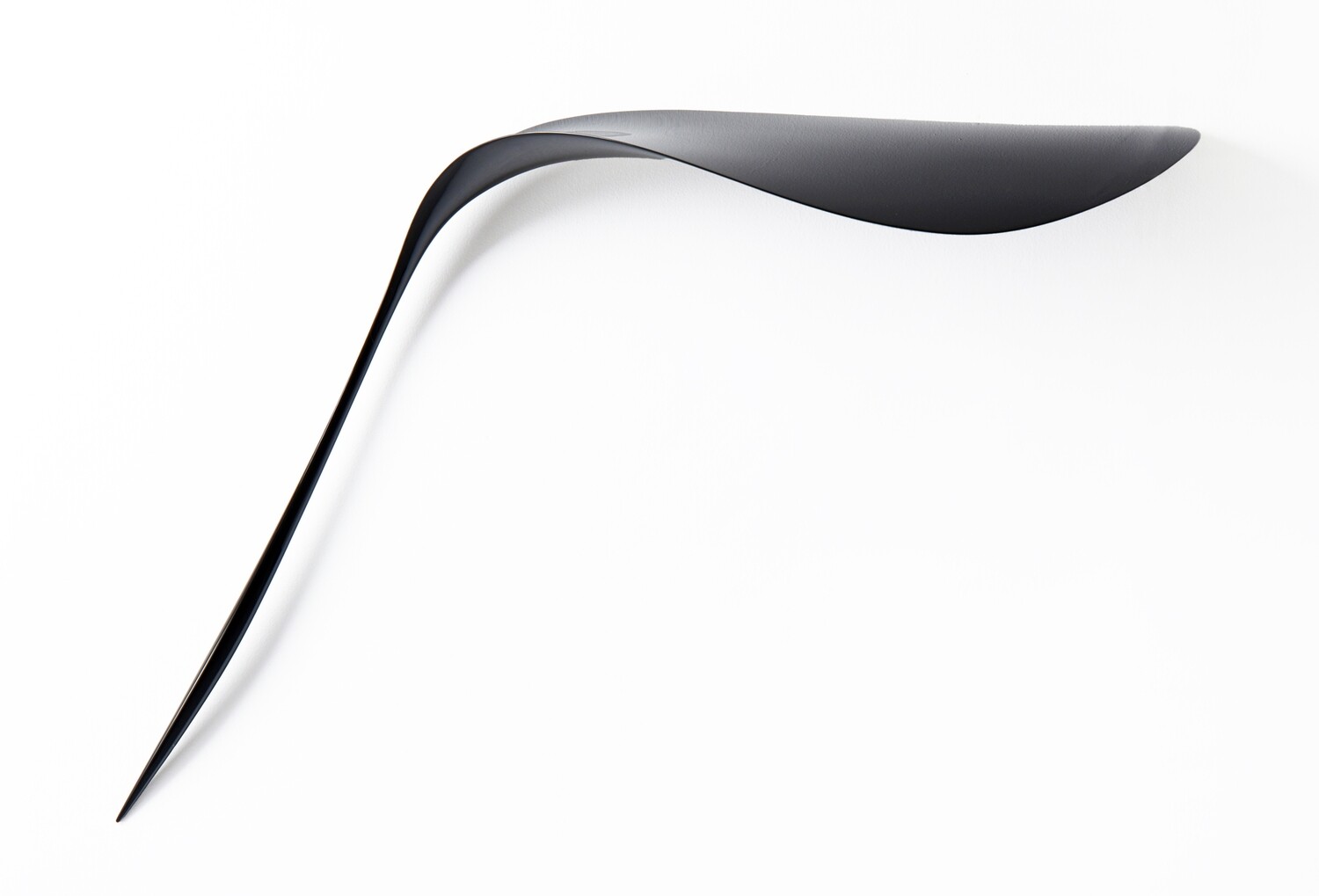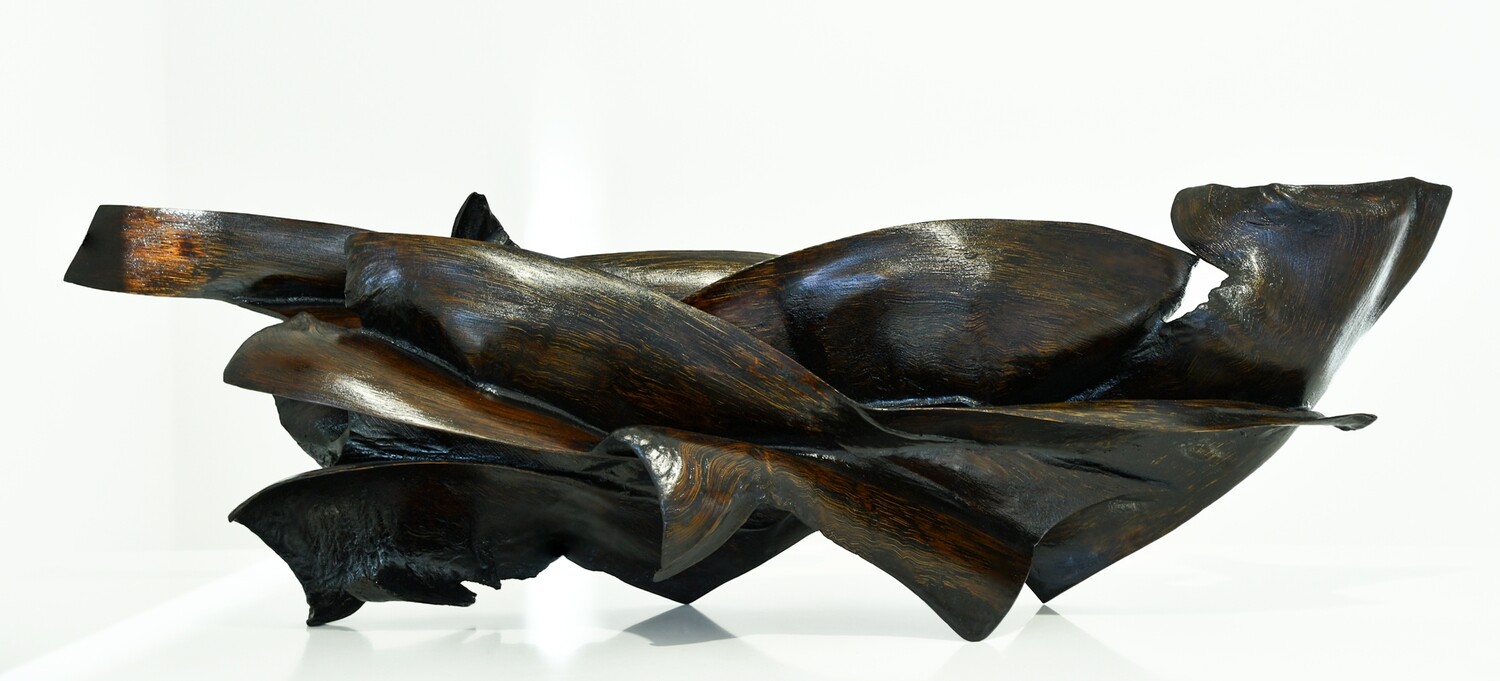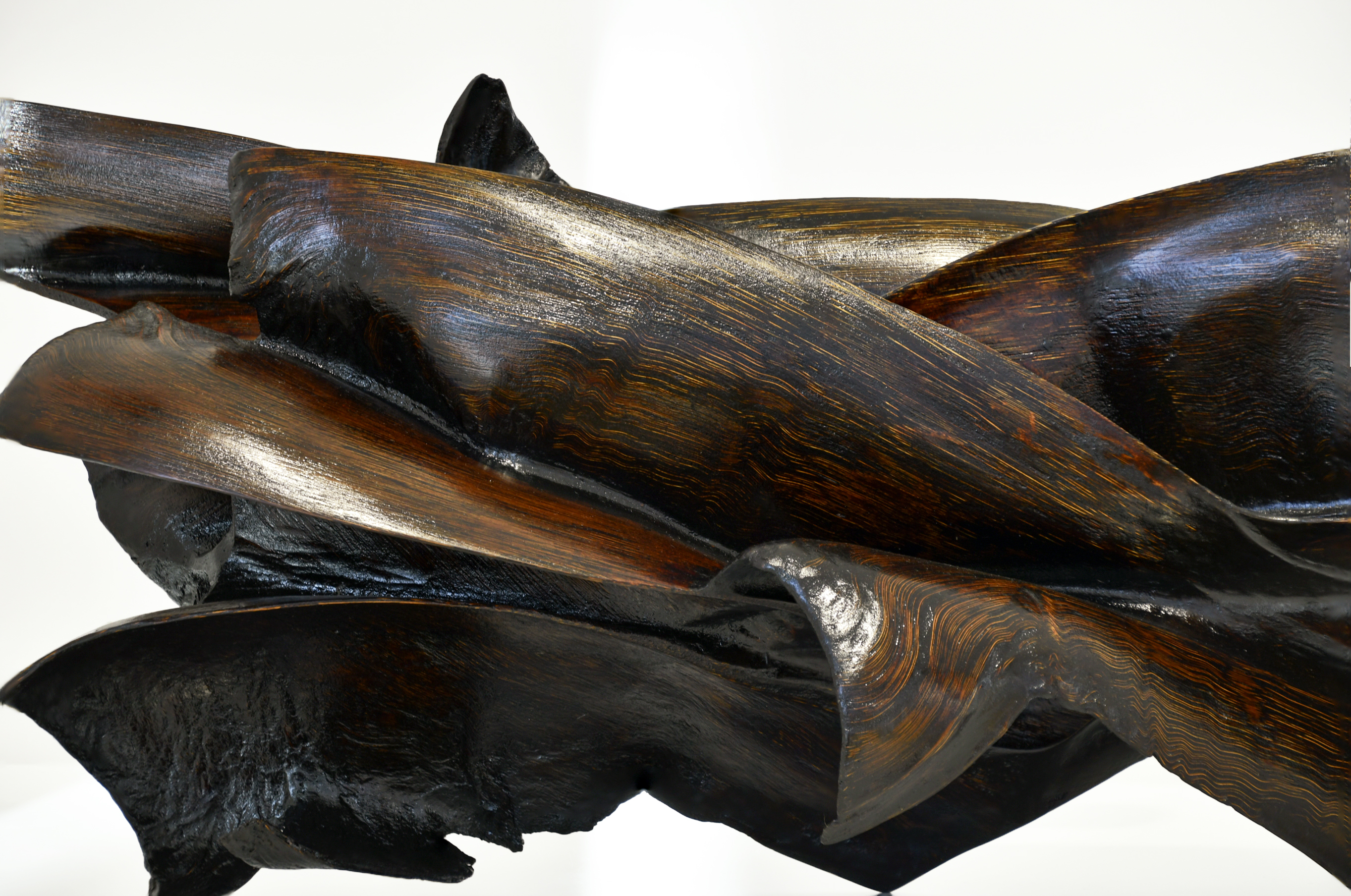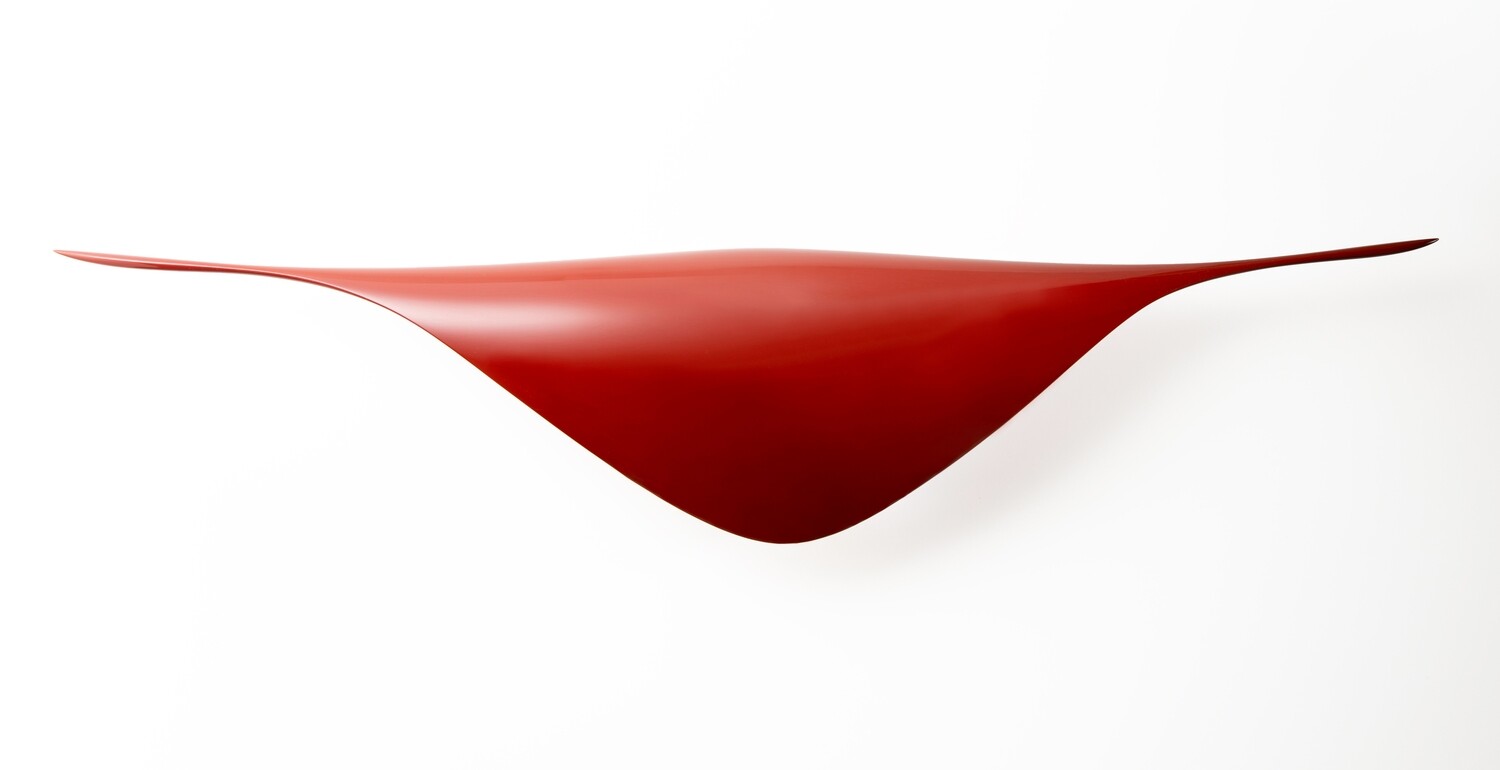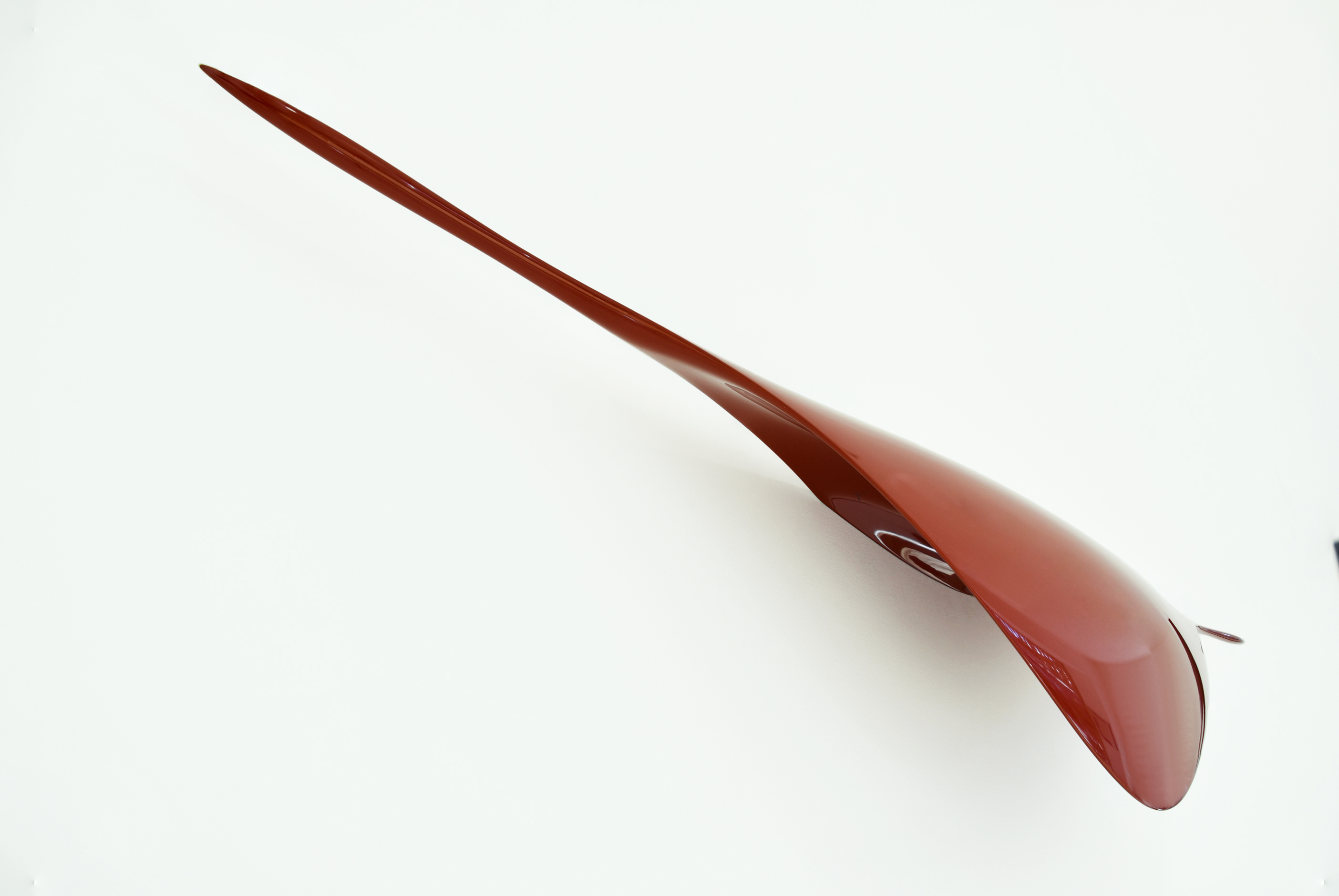Takeshi Igawa
Born in 1980, Takeshi Igawa is an esteemed successor of ancient Japanese Urushi pioneers and is regarded as one of the leading exponents of the new wave of Japanese lacquer artists. At first his interest lied in woodworking, but he soon became fascinated by Urushi and decided to write his PhD dissertation on lacquer coatings. Takeshi realised that Urushi could lead to much more than a medium for utilitarian works, starting to work new conceptual frameworks, inviting viewers to rethink about what they identify as contemporary Japanese art.
As raw Urushi essentially exists in liquid format, an artist using this material must create a core that forms the work to ultimately obtain the desired flowing rendering. Takeshi Igawa works with palm leaves which he attaches together with a mixture of wood chips, glue, and unrefined lacquer. To fortify the base, hemp-cloths are being used. while for some works, styrofoam is used as the substrate. The technique of applying lacquer over a mould of fabric is called kanshitsu, also known as dry lacquer technique.
In his creation process Takeshi first focuses on lines before determining their respective edges. Time is then spent on perfecting the carved shape to “fully expressed the beauty of lacquer once lines and surfaces perfectly harmonize”. His shapes break with traditional lacquer work while applied colours remain within the tradition of Urushi. Playing with shapes, exploiting the natural virtues of lacquer, its deep lustre, and mastering fundamental polishing methods is what pushes Takeshi into his own art boundaries and beyond. His work might be seen as the combination of sculptor’s preoccupations with the eye of a painter working on light and shadows.
Takeshi’s sculptures run some parallels to nature. More specifically they are based on the concept of infinity of the sky and the sea that the artist expresses both physically and spiritually. It is not an accurate representation; instead, he captures the essence of those concepts and reveals their fluctuating characteristics by associating lines, forms, and light. Reflection from a mirror-like surface of water, light breaking through the sky and waves engendered by the wind are at the centre of Takeshi’s creations and are represented through the highly polished lacquer-surfaces, the shine, the mirror effect, and the infinite range of reflections it creates. The sharp angles, opposed to the softness of curves, and vast areas of intense red or black all participate to ultimately create artworks with deep reflections, sensual illuminations, and impenetrable shadows. Takeshi’s sculptures come to life as they interact with the light; the polished lacquer surface reflecting light while capturing its surroundings.
Takeshi Igawa’s sculptures carry elegance and simplicity to immerse the viewer into the Japanese aesthetic. His artworks found their way into the most highly regarded collections in Japan and abroad such as the collection of the Minneapolis Institute of Art (MIA). He is currently an associate professor at the prestigious Saga University in Kyushu.

